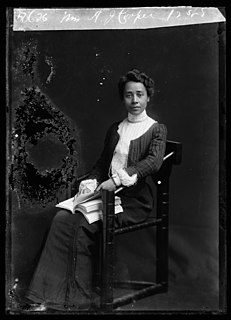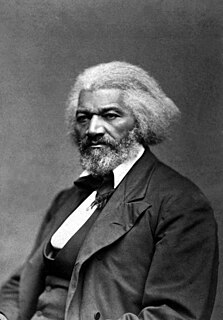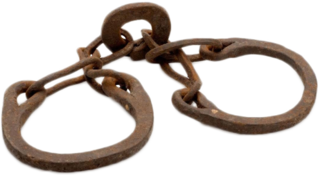 W
WLewis Adams was an African-American former slave in Macon County, Alabama, who is best remembered for his work in helping found the school in 1881 in Tuskegee, Alabama which grew to become the normal school that with its first principal, Booker T Washington, grew to become Tuskegee University.
 W
WNewton Isaac Collins Sr. was an African-American freed slave from Alabama who moved to Travis County, Texas, in the 1840s, where he was re-enslaved. After the Emancipation Proclamation, Collins again received his freedom and became a businessman, land owner and community leader in southeastern Travis County.
 W
WAnna Julia Haywood Cooper was an American author, educator, sociologist, speaker, Black liberation activist, and one of the most prominent African-American scholars in United States history.
 W
WAmanda America Dickson was a bi-racial socialite in Georgia who became known as one of the wealthiest African American women of the 19th century after inheriting a large estate from her white planter father.
 W
WFrederick Douglass was an American social reformer, abolitionist, orator, writer, and statesman. After escaping from slavery in Maryland, he became a national leader of the abolitionist movement in Massachusetts and New York, becoming famous for his oratory and incisive antislavery writings. Accordingly, he was described by abolitionists in his time as a living counterexample to slaveholders' arguments that slaves lacked the intellectual capacity to function as independent American citizens. Likewise, Northerners at the time found it hard to believe that such a great orator had once been a slave.
 W
WWilliam Benjamin Gould was a former slave and veteran of the American Civil War, serving in the U.S. Navy. His diary is one of only a few written during the Civil War by former slaves that has survived, and the only by a formerly enslaved sailor.
 W
WArchibald Henry Grimké was an American lawyer, intellectual, journalist, diplomat and community leader in the 19th and early 20th centuries. He graduated from freedmen's schools, Lincoln University in Pennsylvania, and Harvard Law School and served as American Consul to the Dominican Republic from 1894 to 1898. He was an activist for rights for blacks, working in Boston and Washington, D.C. He was a national vice-president of the National Association for the Advancement of Colored People (NAACP), as well as president of its Washington, D.C. branch.
 W
WFrancis James Grimké was an American Presbyterian minister in Washington, DC. He was regarded for more than half a century as one of the leading African-American clergy of his era and was prominent in working for equal rights. He was active in the Niagara Movement and helped found the National Association for the Advancement of Colored People (NAACP) in 1909.
 W
WGeorge Moses Horton, "the Black bard of North Carolina", was an African-American poet from North Carolina who was enslaved. His first collection, The Hope of Liberty (1829), was intended to earn enough to purchase his freedom, but failed to do so. He did not become free until 1865, when Union troops and the Emancipation Proclamation reached North Carolina.
 W
WAbdul-Rahman ibn Ibrahima Sori (1762–1829) was an African prince and Amir who was captured in the Fouta Jallon region of Guinea, West Africa and sold to slave traders in the United States in 1788. Upon discovering his noble lineage, his slave master Thomas Foster, began referring to him as "Prince", a title he kept until his final days. After spending 40 years in slavery, he was freed in 1828 by order of U.S. President John Quincy Adams and Secretary of State Henry Clay after the Sultan of Morocco requested his release.
 W
WHarriet Jacobs was an African-American writer, whose autobiography, Incidents in the Life of a Slave Girl, published in 1861 under the pseudonym Linda Brent, is now considered an "American classic". Born into slavery in Edenton, North Carolina, she was sexually harassed by her enslaver. When he threatened to sell her children if she did not submit to his desire, she hid in a tiny crawl space under the roof of her grandmother's house, so low she could not stand up in it. After staying there for seven years, she finally managed to escape to the free North, where she was reunited with her children Joseph and Louisa Matilda and her brother John S. Jacobs. She found work as a nanny and got into contact with abolitionist and feminist reformers. Even in New York, her freedom was in danger until her employer was able to pay off her legal owner.
 W
WJohn S. Jacobs was an African-American author and abolitionist. After escaping from slavery he published his autobiography entitled A True Tale of Slavery in the four consecutive editions of the London weekly The Leisure Hour in February 1861. He also features prominently in the classic Incidents in the Life of a Slave Girl, authored by his sister Harriet Jacobs.
 W
WAbsalom Jones was an African-American abolitionist and clergyman who became prominent in Philadelphia, Pennsylvania. Disappointed at the racial discrimination he experienced in a local Methodist church, he founded the Free African Society with Richard Allen in 1787, a mutual aid society for African Americans in the city. The Free African Society included many people newly freed from slavery after the American Revolutionary War.
 W
WDangerfield F. Newby, described as a "huge mulatto", was the oldest of John Brown's raiders, one of the five black raiders. He died during Brown's raid on the federal armory in Harpers Ferry, Virginia.
 W
WSolomon Northup was an American abolitionist and the primary author of the memoir Twelve Years a Slave. A free-born African American from New York, he was the son of a freed slave and a free woman of color. A farmer and a professional violinist, Northup had been a landowner in Washington County, New York. In 1841, he was offered a traveling musician's job and went to Washington, D.C. ; there he was drugged, kidnapped, and sold as a slave. He was shipped to New Orleans, purchased by a planter, and held as a slave for 12 years in the Red River region of Louisiana, mostly in Avoyelles Parish. He remained a slave until he met Samuel Bass, a Canadian working on his plantation who helped get word to New York, where state law provided aid to free New York citizens who had been kidnapped and sold into slavery. His family and friends enlisted the aid of the Governor of New York, Washington Hunt, and Northup regained his freedom on January 3, 1853.
 W
WDenmark Vesey was a Black American leader in Charleston, South Carolina. He worked as a carpenter. In June 1822 he was accused and convicted of being the leader of "the rising," a potentially major slave revolt which was scheduled to take place in the city on July 14. He was executed on July 2.
 W
WPhillis Wheatley Peters, also spelled Phyllis and Wheatly was the first African-American author of a published book of poetry. Born in West Africa, she was sold into slavery at the age of seven or eight and transported to North America, where she was bought by the Wheatley family of Boston. After she learned to read and write, they encouraged her poetry when they saw her talent.